by Usha Alexander
[This is the fourth in a series of essays, On Climate Truth and Fiction, in which I raise questions about environmental distress, the human experience, and storytelling. All the articles in this series can be read here.]
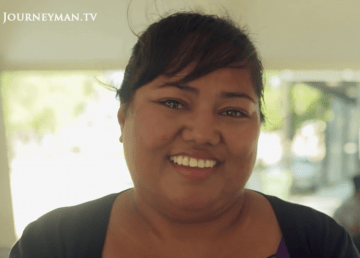 Tabea Bakeua lives in Kiribati, a North Pacific atoll nation. Her country is likely to be the first to disappear completely under the rising seas within a few decades. Asked by foreign documentary filmmakers if she “believes” in climate change, Bakeua considers and tells them, “I have seen climate change, the consequences of climate change. But I don’t believe it as a religious person. There’s a thing in the Bible, where they say that god sends this person to tell all the people that there will be no more floods. So I am still believing in that.” She smiles, self-consciously, as she continues. “And the reason why I am still believing in that is because I’m afraid. And I don’t know how to get all my fifty or sixty family members away from here.” She’s still smiling as tears fill her eyes. “That’s why I’m afraid. But I’m putting it behind me because I just don’t know what to do.” She turns, apologetically, to wipe away her tears. [from “The Tropical Paradise Being Swallowed By The Pacific” by Journeyman Pictures]
Tabea Bakeua lives in Kiribati, a North Pacific atoll nation. Her country is likely to be the first to disappear completely under the rising seas within a few decades. Asked by foreign documentary filmmakers if she “believes” in climate change, Bakeua considers and tells them, “I have seen climate change, the consequences of climate change. But I don’t believe it as a religious person. There’s a thing in the Bible, where they say that god sends this person to tell all the people that there will be no more floods. So I am still believing in that.” She smiles, self-consciously, as she continues. “And the reason why I am still believing in that is because I’m afraid. And I don’t know how to get all my fifty or sixty family members away from here.” She’s still smiling as tears fill her eyes. “That’s why I’m afraid. But I’m putting it behind me because I just don’t know what to do.” She turns, apologetically, to wipe away her tears. [from “The Tropical Paradise Being Swallowed By The Pacific” by Journeyman Pictures]
***
Bakeua’s response is one of many that people now have about anthropogenic climate change. Grasping for magic or miracles in the face of destruction and helplessness, her narrative is common among her hundred thousand fellow citizens. Having remained self-sufficient and sustainably prosperous in their way of life for thousands of years—while contributing effectively zero carbon emissions—they will abruptly be left with nothing as the encroaching tides sweep their lands out from under them, sacrificing their islands for the greater prosperity of other countries. The people of Kiribati played no part in triggering this annihilation and have no way of withstanding it. Nor is the international community throwing them a life raft—through compensatory rights to lands, housing, livelihoods, and autonomy, elsewhere, as would be just—nor even expressing any meaningful concern for their plight.
How did we get to this tragic moment?
Whose responsibility is it to help save the people and culture of Kiribati? And what of other, similar cases now arising around the globe? Our politics seem wholly unequipped to deal with our ongoing and anticipated climate-forced migrations; our worldviews and political formulations evolved on a planet different from the one presently emerging. And a planet now reeling with nearly eight billion souls and a collapse of biodiversity also offers less resource flexibility to respond to the looming global challenges. Knowing these limitations, however, doesn’t absolve us of our responsibility to do everything we can to address the crises; rather, we must figure out how to change ourselves to meet the moment.
We know that human beings have always had to contend with changing climates since our species first emerged in Africa, during the Pleistocene ice age. In earlier eras, having more wilderness and fewer people on Earth afforded a great deal of climate resiliency—inhabitants of drowning islands could readily enough find somewhere else to go, for instance. But as so many of us have been feeling distress or denial about the effects of the changing climate, I’ve wondered how our distant ancestors experienced the changes they lived through. Did they change themselves to meet their moment? What stories did they tell?
In my previous essay, I tried to imagine what people were thinking during humanity’s long, migratory past. Could the stories of those earliest peoples provoke questions about our modern paradigms or illuminate alternate ways to think about ourselves in the world? Speculative as such imaginings are, there is reason to suppose that our early, nomadic-forager ancestors inhabited a worldview dominated by animals and the forces of nature, in which humans played a supporting part, similar to the worldviews reflected in stories of nomadic foragers in more recent times. The connection between their nature-centric stories and their more sustainable ways of life seems straightforward. So it’s no wonder that, as some humans first began to move away from a nomadic-foraging lifestyle to experiment with settlement and artificially built landscapes, their stories also began to change. And though much yet remains mysterious about those first settlers, we can see glimpses of their experience in their earliest written stories.
The eastern Mediterranean—across the Levant toward the Persian Gulf and into Anatolia—is where we’ve found both the earliest evidence of people settling down and also the earliest writing, which comes from the ancient city-state of Sumer about five thousand years ago. The shifting worldviews of the people who inhabited this region are reflected in their material culture over many millennia. And remarkably, the dramatic reversals of climate that their ancestors suffered echo in their surviving tales. What, if anything, can we learn from them?
Seasons of Hearth and Home
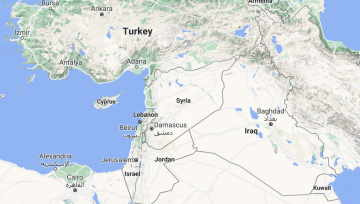 Astonishingly, the earliest signs of nomadic foragers pausing to settle for a spell appear not at the start of the Holocene, as we might imagine, with a gently warming Earth offering itself ripe for tillage. Rather, it was during the peak of the last glacial age—or Last Glacial Maximum (LGM)—at least twenty thousand years ago, that foragers first learned to maintain camp for extended periods by extracting more food from their immediate environs. At that time the plains and low hills of the eastern Mediterranean were covered with savannah, supporting roving herds of small grazers, like gazelles, deer, and goats. These grasslands, generally cool and dry, were broken by tracts of forest, which expanded during the wetter centuries of the variable climate.
Astonishingly, the earliest signs of nomadic foragers pausing to settle for a spell appear not at the start of the Holocene, as we might imagine, with a gently warming Earth offering itself ripe for tillage. Rather, it was during the peak of the last glacial age—or Last Glacial Maximum (LGM)—at least twenty thousand years ago, that foragers first learned to maintain camp for extended periods by extracting more food from their immediate environs. At that time the plains and low hills of the eastern Mediterranean were covered with savannah, supporting roving herds of small grazers, like gazelles, deer, and goats. These grasslands, generally cool and dry, were broken by tracts of forest, which expanded during the wetter centuries of the variable climate.
By this time, nomads had been traversing the region for tens of thousands of years, or hundreds of generations, through multiple fluctuations of the climate, accumulating a detailed knowledge of their relatively abundant environment—where the animals burrowed and how they reproduced; how to read various environmental changes as harbingers of important species fluctuations, or vice versa; when best to harvest which fibers for which purposes; and so much more. Significantly, they learned to gather the edible seeds of local wild grasses like rye, barley, and wheat, as well as sedges, legumes, and nuts, like acorns and pistachios—all nutritionally rich foods that proved worth the extra labor required to harvest and prepare them. They discovered that these plants were also extraordinary for being less perishable than most other foods. A week spent gathering them from an abundant meadow or forest provided enough to sustain a family for several weeks, so long as one could find a way to contain the stocks and keep the pests out. Slowly, these factors accrued, giving rise to social and technological innovations that would affect every aspect of how they lived.
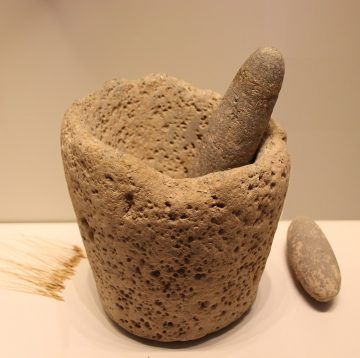 To make the most of this bounty, a foraging band had to remain at the same campsite for weeks, maybe a whole season or longer. They developed new technologies around these valuable resources, including the earliest stone grinders and food storage pit-caches. They altered their hunting strategies, so that instead of concentrating on larger, migratory game, they got much better at fishing and trapping small animals, like hares, tortoises, and partridges, which were always around. They dug wide, shallow pits and covered them with tents of leaves and branches, to create more comfortable dwellings. They even started engraving symbols in shards of rock, possibly an early system of notation or written communication. Before breaking camp at the end of their sedentary season, they carefully stowed their heavy stone grinders in their pit-houses. And every year, for generations, they and their descendants returned to these same campsites, tented fresh branches over their houses, and found their grinders waiting for the next harvest of grains and nuts.
To make the most of this bounty, a foraging band had to remain at the same campsite for weeks, maybe a whole season or longer. They developed new technologies around these valuable resources, including the earliest stone grinders and food storage pit-caches. They altered their hunting strategies, so that instead of concentrating on larger, migratory game, they got much better at fishing and trapping small animals, like hares, tortoises, and partridges, which were always around. They dug wide, shallow pits and covered them with tents of leaves and branches, to create more comfortable dwellings. They even started engraving symbols in shards of rock, possibly an early system of notation or written communication. Before breaking camp at the end of their sedentary season, they carefully stowed their heavy stone grinders in their pit-houses. And every year, for generations, they and their descendants returned to these same campsites, tented fresh branches over their houses, and found their grinders waiting for the next harvest of grains and nuts.
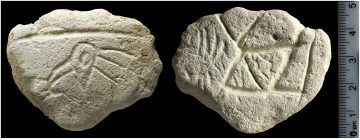 But the glacial age remained exceedingly cold. Ongoing variability in the cold climate prevented these semi-nomads from depending too heavily or inflexibly upon any narrow range of foods. What enabled them to return to their old campgrounds and remain there for part of the year wasn’t their dependence upon a few staples, but rather the breadth of resources they’d learned to extract from the same patch of ground, which could be remixed and adjusted from year to year, as necessary, if some food sources failed. Thus retaining their resilience against the shifting climate, Levantine bands practiced this lifestyle for several thousands of years.
But the glacial age remained exceedingly cold. Ongoing variability in the cold climate prevented these semi-nomads from depending too heavily or inflexibly upon any narrow range of foods. What enabled them to return to their old campgrounds and remain there for part of the year wasn’t their dependence upon a few staples, but rather the breadth of resources they’d learned to extract from the same patch of ground, which could be remixed and adjusted from year to year, as necessary, if some food sources failed. Thus retaining their resilience against the shifting climate, Levantine bands practiced this lifestyle for several thousands of years.
Establishing the Name of Mankind
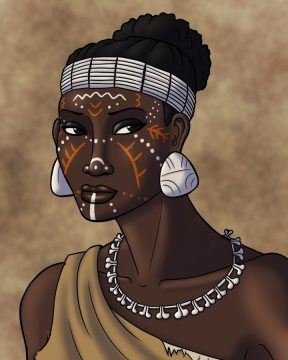 The glacial age relented about fifteen thousand years ago, when a millennium of steady warming suddenly brought milder, wetter conditions to the eastern Mediterranean region. This favored the expansion of forests with their nut-bearing trees, providing greater surpluses for the local bands. Gatherers invented sickles to harvest the wild grasses too, which likely grew more robustly as the atmospheric carbon dioxide concentration crested above 200 ppm. Some bands now found it sensible to remain in their basecamps throughout the year, entirely giving up their seasonal nomadism. Instead of following the game, hunters undertook seasonal mass hunts of gazelles. Experimental cooks developed early technologies for fermenting cereal mash as a drink and for baking it into bread.
The glacial age relented about fifteen thousand years ago, when a millennium of steady warming suddenly brought milder, wetter conditions to the eastern Mediterranean region. This favored the expansion of forests with their nut-bearing trees, providing greater surpluses for the local bands. Gatherers invented sickles to harvest the wild grasses too, which likely grew more robustly as the atmospheric carbon dioxide concentration crested above 200 ppm. Some bands now found it sensible to remain in their basecamps throughout the year, entirely giving up their seasonal nomadism. Instead of following the game, hunters undertook seasonal mass hunts of gazelles. Experimental cooks developed early technologies for fermenting cereal mash as a drink and for baking it into bread.
They lined their pit-houses with stones for structural reinforcement. In the outdoor spaces, they laid smooth rock platforms. Over generations, their basecamps or villages grew larger, covering more ground and including more built structures, suggesting foraging bands now included more souls than the nomad’s dozen; population density was rising. These were the first peoples we know of to live at least part of the time in a durable, artificially built environment.
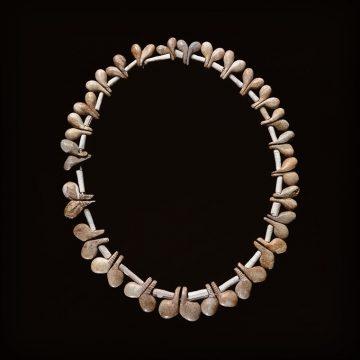 One wonders what they thought of themselves, now living in and among persistent artificial constructions—rather than in natural caves or flimsy, temporary shelters—and eating foods prepared through advanced techniques like fermentation and baking, as no other animal had ever done. These experiences might have sparked new notions of humanity as separate from the rest of nature, alongside a stronger sense of territoriality. Burial customs grew more elaborate, including grave goods of remarkable jewelry. In some graves, people were accompanied by dogs. Skulls of the deceased were sometimes carefully detached and reburied. No doubt these funerary practices reflected changing ideas about death, impermanence, and the afterlife. Did fashioning novel and permanent landscapes with their own hands give them a new sense of power? Did their sturdier dwellings diminish for them the menace of the Storm God? Did they need to appease less often the spirit of the lion? Did they now tell a tale of a hero who outsmarted the wind?
One wonders what they thought of themselves, now living in and among persistent artificial constructions—rather than in natural caves or flimsy, temporary shelters—and eating foods prepared through advanced techniques like fermentation and baking, as no other animal had ever done. These experiences might have sparked new notions of humanity as separate from the rest of nature, alongside a stronger sense of territoriality. Burial customs grew more elaborate, including grave goods of remarkable jewelry. In some graves, people were accompanied by dogs. Skulls of the deceased were sometimes carefully detached and reburied. No doubt these funerary practices reflected changing ideas about death, impermanence, and the afterlife. Did fashioning novel and permanent landscapes with their own hands give them a new sense of power? Did their sturdier dwellings diminish for them the menace of the Storm God? Did they need to appease less often the spirit of the lion? Did they now tell a tale of a hero who outsmarted the wind?
The Olden Times, Now Turned to Clay
Then, just as suddenly as it had begun, the warming trend reversed into a period called the Younger Dryas. Over the next fifteen hundred years, the world’s temperature dropped, wobbled, then dropped again further, if not quite to the deepest extremes of the LGM. In the eastern Mediterranean, subsistence patterns changed. Villages were unsettled as people returned to a more mobile lifestyle, living again in semi-sedentary bands. Their burials were diminished, featuring fewer grave goods and less jewelry. Those who lived through this transition, after generations of abundance and sedentism, must have experienced it as an impoverishment, a societal decline, an unyielding season of hunger and death that continued for a generation or two, until the population re-stabilized within their revised way of life.
But though they resorted to the semi-nomadic lifeways of their ancestors, they were not the same. The stories they now told about who they were and how to live had been forever altered by their experience of sedentism. In Anatolia, some villages might have better survived the climatic shift, persisting longer, if relatively impoverished compared to their ancestors; elsewhere, some groups might have tried repeatedly to resettle into villages, during intermittent decades of warming, only to return to semi-nomadism as the cold took deeper hold of the land. Given the reverence for settled life that we find in later stories from the region, I wonder if the more persistently settled villages came to be held in esteem, their names recounted in legends by neighbors forced to rely on varying degrees on nomadism.
They all retained the knowledge of harvesting grains; indeed, they now exploited grains even more heavily, as grasslands expanded against the shrinking forests in the cooling climate. They continued to develop their symbol system, etched into stone and shared in common with peoples even far beyond the Mediterranean region, undoubtedly including speakers of multiple languages. And they began assembling in temporary gatherings with thousands of people, joined by a shared cosmology and purpose, to build the oldest known megalithic structures at Göbekli Tepe, in southern Anatolia. It’s here that we see, for the first time, art that depicted human beings as central or superior to animals in the celebrated cosmology.
The Dove Returns
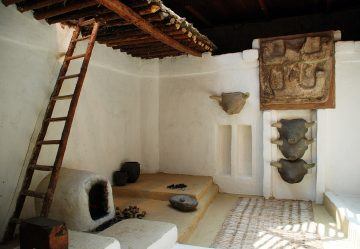 And once more, the climate reversed its trend. Just under twelve thousand years ago, the world suddenly began to warm again, even faster than it had done before—the global average temperature rising by one degree Celsius in a little over a thousand years: the fastest global warming humans had ever experienced, before now (when it’s rising more than ten times faster). Eastern Mediterranean peoples now quickly resumed the fully sedentary lifestyle abandoned by their ancestors fifty generations earlier, including the revitalization of their funerary practices. It seems they remembered all they needed to know about village life. And they would build upon it.
And once more, the climate reversed its trend. Just under twelve thousand years ago, the world suddenly began to warm again, even faster than it had done before—the global average temperature rising by one degree Celsius in a little over a thousand years: the fastest global warming humans had ever experienced, before now (when it’s rising more than ten times faster). Eastern Mediterranean peoples now quickly resumed the fully sedentary lifestyle abandoned by their ancestors fifty generations earlier, including the revitalization of their funerary practices. It seems they remembered all they needed to know about village life. And they would build upon it.
This time the warming stabilized into the Holocene, our current climate regime. The eastern Mediterranean region became warmer, wetter, and more productive than the locals had ever known it to be. Populations began to increase again; by nine thousand years ago the foragers of eastern Anatolia were living in villages of up to seven thousand people, far different from those mobile bands of a dozen. This ushered in unprecedented social, cultural, and material developments, including increasingly elaborate burials with more jewelry and clothing. Houses were built of mud brick, packed in tight, hive-like clusters with doors in the ceilings. Skulls were again removed as in ancestral times, but now remolded with clay faces and gently preserved for many years. Villagers burned forest to increase the share of grassland from which they could gather cereal grains. They captured and tamed goats and sheep, husbanding them throughout their life cycles and breeding them. And they began protracted experiments with selecting and propagating the best seeds of grain, increasing their yields.
Stories of Times Immemorial
Oral traditions can run astoundingly deep; funds of communal knowledge can be surprisingly vast. Features of life and landscape can be described—often with mythical embellishments—even from the long-vanished past, from times immemorial, enshrined by highly developed systems of retention. We know this from fairly modern examples, such as in Australia, where unrelated stories have been collected from the lore of multiple Aboriginal peoples around the continent, which plausibly observe the rising of the seas, between fourteen and eight thousand years ago, as the world was warming up from the LGM and stabilizing into the Holocene. Stories of the Narrangga people in southeastern Australia, for example, describe Spencer Gulf as a marshy landscape, as it would have appeared when the sea level was between twenty and fifty meters lower than today. Stories of the Tiwi people of Melville and Bathurst Islands recount seawater being drawn into the landscape, separating the islands from each other and the mainland, which is what happened when the sea climbed up from between twelve and fifteen meters lower than today. Similarly, other myths and legends from around Australia accurately recall long lost features of the coastal geography or remember place names for areas long since submerged or record volcanic events. One legendary creature described by the Adnyamathanha people in the Flinders Ranges plausibly refers to the megafauna, Diprotodon, which went extinct some forty thousand years ago. It would seem our most ancient ancestors not only took note of the living land, they spoke of it for hundreds of generations, even long after everything had changed.
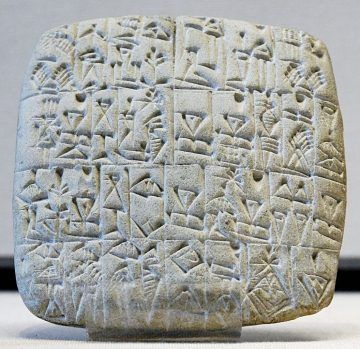 Similarly, the surviving bits of the oldest Sumerian tales hint at memories of devastating weather leading to social collapse. The Sumerians had become full time agriculturalists in southern Mesopotamia by the time they first wrote down their stories, the oldest of which hearken back to their more ancient, oral traditions. The landscape they farmed was already dotted with the buried ruins of older settlements, abandoned hundreds or thousands of years earlier by their half-forgotten, half-legendary forebears—remains of earlier, failed farming villages; of older foraging villages; perhaps of extended basecamps from a time of semi-sedentism.
Similarly, the surviving bits of the oldest Sumerian tales hint at memories of devastating weather leading to social collapse. The Sumerians had become full time agriculturalists in southern Mesopotamia by the time they first wrote down their stories, the oldest of which hearken back to their more ancient, oral traditions. The landscape they farmed was already dotted with the buried ruins of older settlements, abandoned hundreds or thousands of years earlier by their half-forgotten, half-legendary forebears—remains of earlier, failed farming villages; of older foraging villages; perhaps of extended basecamps from a time of semi-sedentism.
In what they refer to as “the olden times,” one of the oldest Sumerian stories tells us that, after “the name of mankind had been established” and “the land flowed with abundance,” after ovens had been fired up and bread had been eaten, then the ancient Sumerian god, Enki, took a boat to the land of the dead. And as he went, his boat was caught up in a raging storm:
on the lord small ones hailed down,
on Enki big ones hailed down –
the small ones were hammer-stones,
the big ones were reed-crushing stones
into the bottom of Enki’s boat
they poured in heaps like surging turtles.*
All around his boat, the water “snapped… like wolves” and “flailed like murderous lions.” The winds blew so fiercely that a great tree on the bank was ripped from the ground by its roots, all its branches stripped away.
The image painted here calls to mind the recent derecho that devastated parts of the American Midwest as well as the bruising hailstones that pummeled cyclists in France—both occurring during the same week of mid-August during this year of our own destabilized and often bizarre weather. It makes me wonder if Enki’s story isn’t, in fact, a collective memory of episodes from a changing climate, of the upheaval which occurred after generations of abundance, settlement, and the invention of bread—those glorious “olden times”—when the world suddenly grew colder and villages might have been destabilized by hunger and destructive weather. There may have been cataclysmic storms and flash floods, driving an impoverished populace from their villages. These scenes may have played out several times in different villages of the region during the Younger Dryas, seven to fourteen thousand years before the surviving copies of this story were written in clay. And perhaps again, after villages had been re-established following the disruptions of the Younger Dryas and were increasingly reliant on farming, during a sudden, centuries-long period of cooling, called the “8.2 kilo-year event,” about three thousand years before writing.
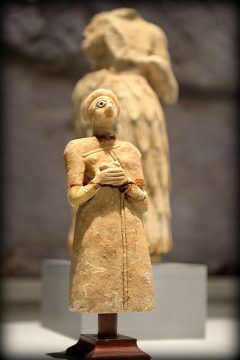 But there is even more wild weather in the oldest Sumerian tales, most famously of a flooding storm. The gods felt there were too many people, the story tells us; they found the noise bothersome. So they decided to destroy all of human life. But Enki warns one man of the gods’ malevolent plans, instructing him to build a tremendous boat and to carry aboard it all “the beasts of the field, the creatures of the wild,” as well as a contingent of “experts of every skill and craft.” The chosen man does as he’s told. And as he escapes with his charges, the devastation around him is absolute:
But there is even more wild weather in the oldest Sumerian tales, most famously of a flooding storm. The gods felt there were too many people, the story tells us; they found the noise bothersome. So they decided to destroy all of human life. But Enki warns one man of the gods’ malevolent plans, instructing him to build a tremendous boat and to carry aboard it all “the beasts of the field, the creatures of the wild,” as well as a contingent of “experts of every skill and craft.” The chosen man does as he’s told. And as he escapes with his charges, the devastation around him is absolute:
The Anunnaki gods carried torches of fire,
scorching the country with brilliant flashes.
The stillness of the Storm God passed over the sky,
and all that was bright then turned into darkness.
[He] charged the land like a bull [on the rampage,]
he smashed [it] in pieces [like a vessel of clay.]
For a day the gale [winds flattened the country,]
quickly they blew, and [then came] the [Deluge.]
Like a battle [the cataclysm] passed over the people.
One man could not discern another,
nor could people be recognized amid the destruction.
Looking upon the scene, the ur-mother goddess now regrets the decision to destroy all of her children. “The olden times have truly turned to clay,” she laments. “It is I who give birth, these people are mine! And now, like fish, they fill the ocean!” So on the seventh day, Enki ends the storm. For surviving the flood with their charges intact, Enki rewards the boat-builder and his wife with immortality. Then he scolds the other gods for bringing the deluge. You didn’t have to do it this way, he chides them, offering alternative suggestions to reduce the human population:
“Instead of your causing the Deluge,
a lion could have risen, and diminished the people!
Instead of your causing the Deluge,
a wolf could have risen, and diminished the people!
“Instead of your causing the Deluge,
a famine could have happened, and slaughtered the land!
Instead of your causing the Deluge,
the Plague God could have risen, and slaughtered the land!”
Again, the story seems to recall a great storm (or storms) and population decline. Obviously, this Sumerian story has been interpreted in many ways, passed down into different traditions, and used to support other religious sensibilities. But in this, its earliest known telling, I wonder if it also describes the vulnerability of a settled society to the cataclysmic forces of a raging climate, the experience of social breakdown and upheaval, which the ancestors of the Sumerians would have suffered more than once.
Generations after the deluge, the later Sumerian king and hero, Gilgamesh, would embark upon the greatest trial of his life, hoping to find the flood-survivors and beseech the man to share the secret of his immortality. But the survivor isn’t able to help Gilgamesh with his wish. Instead, he teaches the young king about the inevitability of death and the importance of properly honoring the gods; he imparts the lore of maintaining settled—or “civilized”—life. The survivor’s great deed—perhaps the essence of his immortality—was the preservation of this most essential knowledge, so that the settled world could be restored and maintained after a destruction. Upheaval, grief, rebuilding. These were cycles that those ancients knew well—and seem to have preserved in their oldest stories.
In the Sumerian legend, the flood-survivors were given clear instructions on how to weather the catastrophe, what to preserve. And they lacked nothing they required to carry out the plan. In fact, the peoples of the eastern Mediterranean region apparently did rely upon their collective memory of older ways of life in order to thrive as well as they did through the changing climates. I find it encouraging to remember that human societies have reinvented themselves after the most profound upheavals. The eastern Mediterranean story makes me want to ask, what ancient knowledge and wisdom might benefit us still? What of today’s understanding and skills are most essential for our best possible future? And might those most vulnerable to climate change today—like the people of Kiribati—better survive to carry on and share their experience of sustainability, if the international community provided clear and viable options and direct aid, rather than mere warnings?
________________
*All quotations are sourced from, The Epic of Gilgamesh (Penguin Classics). Penguin Books Ltd. Kindle Edition.
[Part 5, Lost and Found in Eden]
Earlier Essays in this Series
1 What We Talk About When We Talk About The Weather
Images
1. Tabea Bakeua, screenshot from “The Tropical Paradise Being Swallowed By The Pacific” by Journeyman Pictures, 2018.
2. Map of the eastern Mediterranean region.
3. Kebaran mortar and pestle, dating from 22–18kya. The Israel Museum, Jerusalem Archaeology, Creative Commons.
4. Kebaran rock engravings featuring bird image, from Ein Qashish South, Jezreel Valley, Israel, dating from 23kya and 16kya. Creative Commons.
5. Artist’s depiction of a Natufian gather-hunter woman, ca 12.5–10kya, with jewelry based on finds from El Wad in what is now Israel. By Brandon Spilcher.
6. Natufian bone and bead necklace, ca 12–9kya from HaNahal/el-Wad Cave on the western slopes of the Carmel Mountains. Brandon Spilcher.
7. Reconstructed dwelling from Catal Hüyük, a foraging village that flourished in southern Anatolia around 7,000 BCE. Creative Commons.
8. Clay tablet from Sumer featuring Cuneiform writing, denoting the sale of a male slave and a building in Shuruppak, ca 2,600 BCE. Creative Commons.
9. Alabaster statue of a Sumerian female worshiper. The head might not belong to the torso, ca 2400 BCE. Sulaymaniyah Museum, Iraq. Creative Commons.
